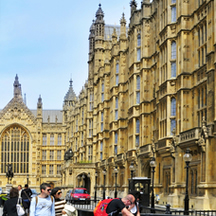|
18 October 2021 last updated |
 |
| Care funding from Government may not start paying until 2026 |
 |
| |
Self-funding likely to continue to June 2026 if the Government pay £600 pw of care costs. |
|
|
|
|
Government care funding will begin in England from October 2023 but payments will not start until the £86,000 cap is reached which could be 2026 or later.
Funding long term care in England is part of the Government's 'Build Back Better' plan for health and social care which initially includes funding support for the NHS and they are preparing a White Paper to be published later in 2021.
To pay for the funding of the NHS and long term care, from April 2022 the Government will introduce a new levy of 1.25% National Insurance and dividend tax rate of 1.25%.
The Government are setting a maximum amount that people will contribute to care with an £86,000 cap and introducing a new means-test although important details are still missing and these need clarification from the Government in the White Paper.
Currently people requiring long term care are either self-funding the costs or purchase an immediate needs annuity to cap the total cost of care.
Find related news here:
Immediate needs annuity - Guide to paying for care
Long term care - State benefit, funding and means testing
The question is how the Government plans will impact using an immediate needs annuity as this depends on the level of funding and if this is for care only or care and accommodation. It could mean payments made by local authorities to fund care would not begin until 2026 or later.
£86,000 funding cap from 2023
The Government's new cap of £86,000 in England will start from October 2023 based on the amount a person spends on ‘their personal care’ during their lifetime.
There is no reference about the type of care fees that contribute to the cap, such as the actual cost of care paid by anyone self-funding or whether this would be the local authority rates. There is no mention if contributions to the cap would include ‘accommodation’ costs.
The report gives examples referring to someone paying for care and that they would be required to contribute to daily living costs once the cap is reached.
Residential and nursing care costs can range from £36,000 pa to £80,000 pa depending on the service and accommodation selected. The Local authorities apply rates where they are responsible for providing care and it could be that these rates would apply or a new Government care funding rate would apply to cover the cost of care.
As an example, the following shows the anticipated date self-funding is required until the cap is reached. Self-funding may still be required for accommodations costs (and higher levels of personal care costs) after this date.
Funding rate of £300 per week (£15,600 pa) – March 2029
Funding rate of £600 per week (£31,200 pa) – June 2026
Taking a person with care costs of £60,000 per year rising at 5% each year, a Government funding rate of £300 pw would mean the £86,000 cap is reached by March 2029. Self-funding up to this date would accumulate total care costs of £580,668.
With a Government funding rate is £600 pw, the cap is reached by 30 June 2026 and self-funding up to this date would accumulate total care costs of £331,138.
If the care funding rate is £300 to £600 per week, a person with care costs of £60,000 pa would self-fund a total of £331,138 to £580,668 before the Government started to make payments.
Refunding surplus income
After using existing sources of income from pensions or attendance allowance, any shortfall in care costs can be met by using an immediate needs annuity.
This would cap the immediate cost of care due to the length of time it will take to reach the £86,000 cap before Government funding can begin. Even then, care costs would have increased often by 5% each year leaving a shortfall in funding.
If there was a surplus of income from the immediate needs annuity once the Government care funding contributes to the cost of personal care, this would be refunded by the provider to a designated bank account.
New means-test from 2023
Anyone with assets under £20,000 would not have to make any contribution for their care from savings or the value of the home but may need to contribute from their income.
Anyone with assets of £20,000 to £100,000 is likely to receive some local authority funding towards their care costs. They would not contribute more than 20% of their assets per year until the £86,000 cap. They may need to contribute from their income.
Anyone with assets over £100,000 would pay the full care fee costs until the £86,000 cap is reached. If their assets fall below £100,000, they will receive some local authority funding towards their care costs. If their assets fall below £20,000, they would not be required to contribute to care costs but may need to contribute from their income.
The examples shown above are based on the information available from the initial 'Build Back Better' report and Government's White Paper later in 2021 should provide clarity regarding the car funding rate and how this will be applied.
|

